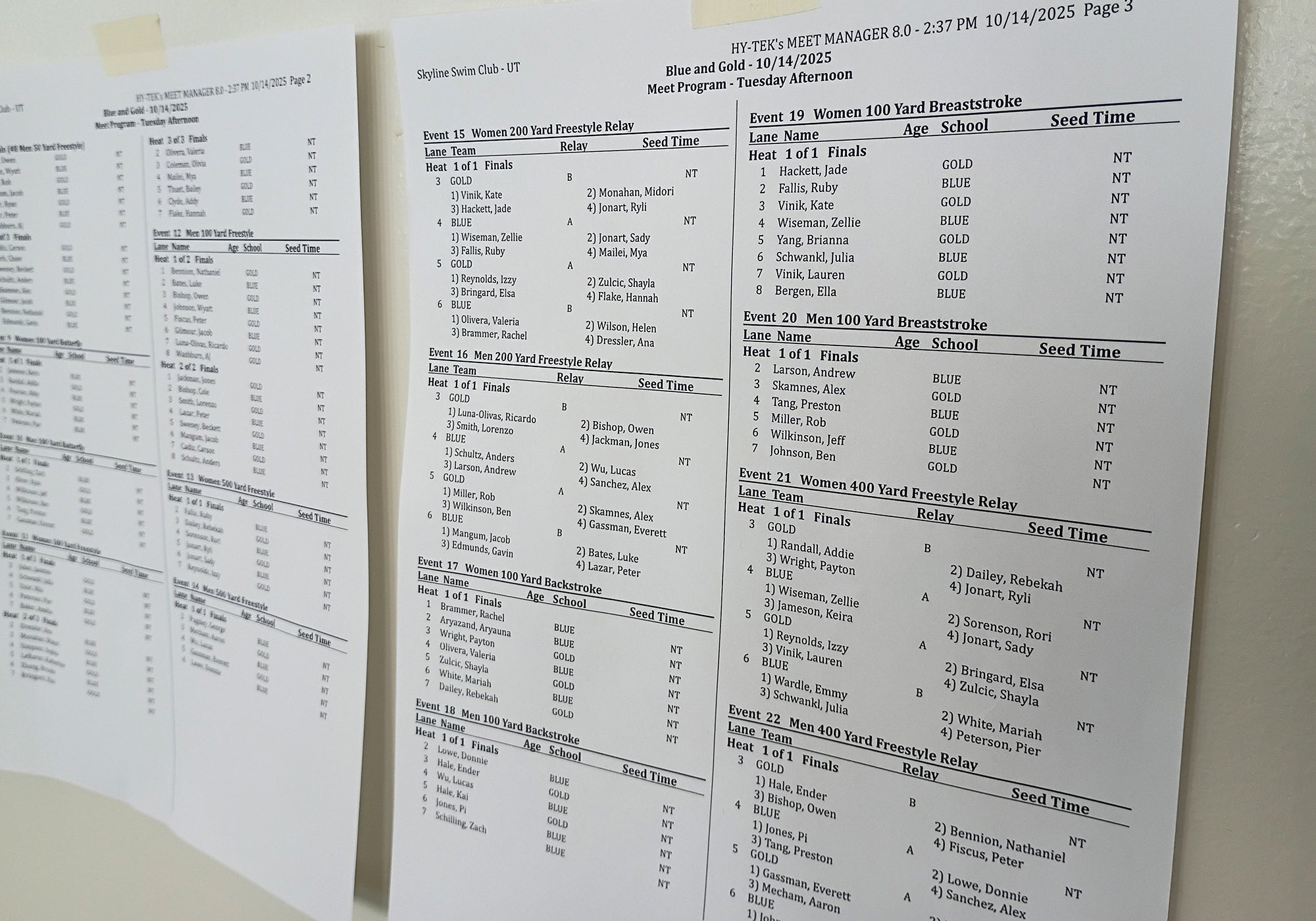How to Read a Swim Meet Heat Sheet
If you’re new to swim meets, heat sheets can feel like another language. But once you understand how to read them, they become your roadmap for the day. Here’s a beginner-friendly guide to make sense of it all.
What Is a Heat Sheet?
A heat sheet is a schedule of the meet, showing every event, swimmer, and lane assignment. Instead of being emailed out, heat sheets are usually printed and posted around the pool for swimmers and parents to check throughout the meet.
Breaking Down the Parts of a Heat Sheet
-
Event Number: Each race has a number (e.g., Event 12 – Girls 11-12 50 Freestyle).
-
Age Group Gender: Shows who is eligible to swim in that event.
-
Stroke Distance: Which stroke (free, back, breast, fly, IM) and how far.
-
Heat Number: If too many swimmers are entered, the event is split into multiple heats.
-
Lane Assignment: The lane where each swimmer will line up and race.
Example Walkthrough
You might see something like this:
Event 12, Heat 3, Lane 5: John Smith, Boys 11-12, 50 Free, Seed Time: 32.45
-
Event 12: The twelfth race of the meet.
-
Heat 3: John is in the third group of swimmers for that event.
-
Lane 5: He’ll swim in lane five.
-
Seed Time 32.45: His best time in this event, used to place him in heats.
Understanding Seeding
Not all meets seed swimmers the same way. Here are a few common methods:
-
Standard Seeding: Slowest swimmers go first, with the fastest in the last heat.
-
Circle Seeding: Common at championship meets. The fastest swimmers are spread across the last three heats so they don’t all compete directly until finals.
-
Prelim/Final Seeding: In meets with prelims and finals, morning races are seeded by times, and evening finals are re-seeded based on results.
-
Random Seeding: Sometimes used for novice or fun meets to mix things up.
Tips for Using Heat Sheets at Meets
-
Write your swimmer’s events, heats, and lanes on their arm with a Sharpie.
-
Double-check posted sheets during the meet in case of scratches or reseeding.
-
Track event numbers so your swimmer is behind the blocks on time.
Conclusion
Heat sheets may look intimidating at first, but they quickly become second nature. Once you learn to read them, you’ll feel more confident navigating meets and helping your swimmer be in the right place at the right time.

